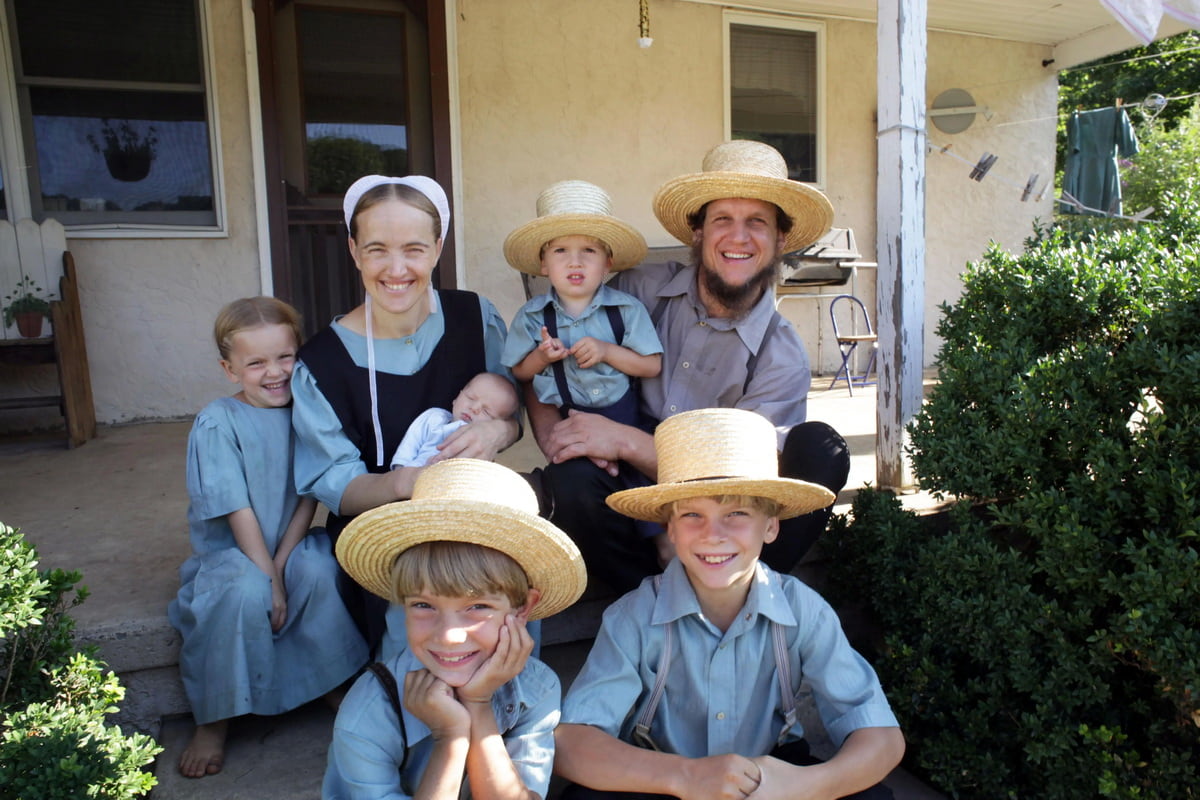Imagine a community where musical instruments are silent yet hymns fill the air, where beards signal marital status, and where the rumble of a car engine is rare but not unheard of. Picture a society that values simplicity so profoundly that children’s education ends at eighth grade, and technology is kept at arm’s length, yet not entirely out of reach. This is the world of the Amish, a group whose lifestyle challenges the relentless pace of modernity, sparking curiosity and admiration.
From the deeply symbolic to the seemingly paradoxical, their traditions weave a fascinating narrative of resilience and faith. As we uncover fun facts about Amish people, we invite you to step into their unique way of life, where every detail tells a story of dedication to principles, community, and simplicity.
1. Origins and Population of the Amish
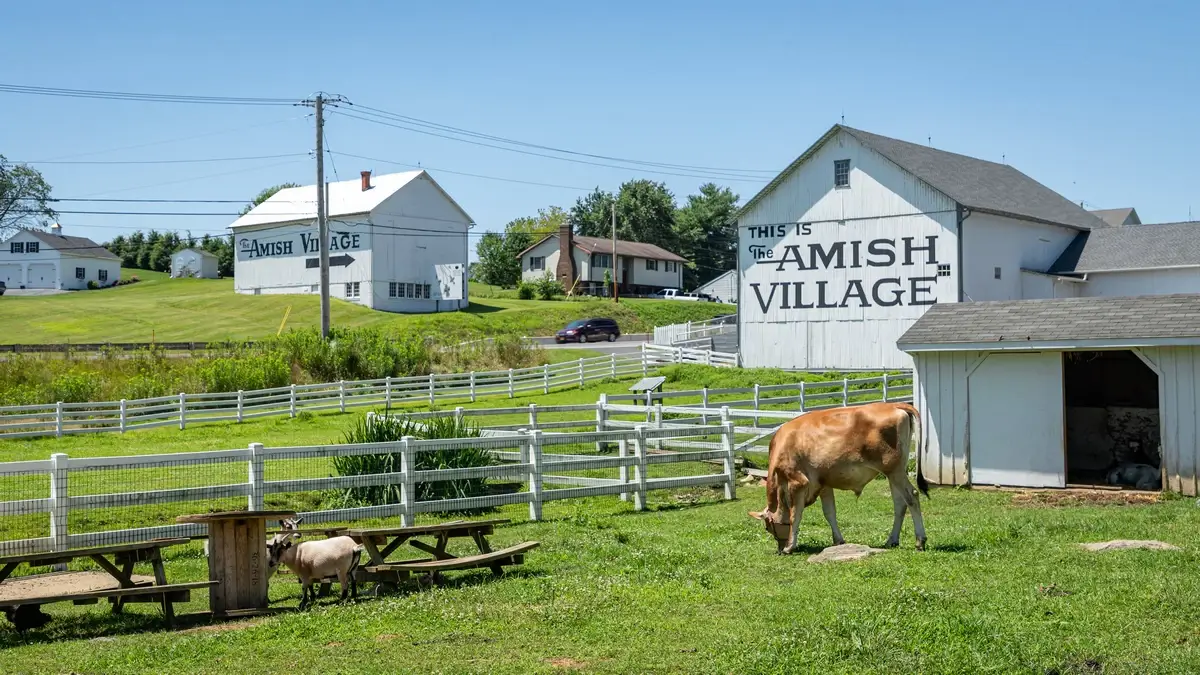
Image: travel-assets.com
The Amish, known for their simple living, plain dress, and reluctance to adopt modern technology, trace their origins to the Anabaptist movement in Switzerland during the late 17th century. This movement, emphasizing adult baptism, led to the formation of the Amish sect following a schism led by Jakob Ammann. Ammann’s followers, seeking religious freedom and land ownership, began immigrating to North America in the early 18th century, with significant settlements established in Pennsylvania, notably Lancaster County.
In North America, the Amish community has grown considerably due to their large families and high retention rates of church youth. From their initial settlements in Pennsylvania, they have expanded across the United States and Canada, with significant populations in Ohio, Indiana, Iowa, Illinois, and Kansas. The Amish distinguish themselves from the Mennonites, although both share Anabaptist roots, mainly in their adherence to stricter community rules and simpler lifestyles.
Today, the Amish population exceeds 350,000 across 31 states and Canada, with their communities characterized by a strong emphasis on humility, family, and separation from the modern world. Despite their growth and spread, the Amish continue to maintain their cultural and religious practices, largely avoiding the use of modern technology to preserve their way of life and community values.
2. No Musical Instruments Allowed
In the Amish community, musical instruments are largely absent, a choice reflecting deep cultural and religious beliefs. The harmonica stands as a sole exception, played occasionally, but the primary avenue for musical expression among the Amish is through singing. This tradition underscores a commitment to humility, aiming to avoid individual pride and maintain modesty.
By focusing on vocal music, the Amish cultivate a communal spirit during worship, at home, and in social settings, sidestepping the individual spotlight that playing an instrument might shine on a person. The prohibition extends to public performances and religious services, where only group singing is practiced, eschewing any form of instrumental accompaniment.
3. Significance of Beards in the Amish Community

Image: independent.co.uk
In the Amish community, beards carry a profound significance related to marital status and maturity. A beard is not merely facial hair but a symbol deeply entrenched in tradition and religious belief. Upon marriage, an Amish man stops shaving his beard, signaling his new marital status to the community. This practice serves as an alternative to wearing wedding bands, which the Amish do not use. The tradition of growing a beard post-wedding underscores the community’s values of simplicity, humility, and the adherence to biblical teachings.
Mustaches, however, are notably absent among Amish men. This is rooted in historical associations with military and violence, which are at odds with the Amish principles of non-violence and pacifism. Historically, mustaches were a common feature among soldiers, including British troops. To distinguish themselves and reinforce their commitment to nonresistance, the Amish abstain from growing mustaches. This practice, dating back to the early days of the Amish and under the guidance of their founder Jakob Ammann, is a reflection of their dedication to a life of humility and separation from the broader societal trends toward militarism and aggression.
Despite the uniformity in this practice, there is some variation among different Amish communities. For instance, the New Order Amish may have slightly different approaches to beard grooming, often keeping their beards shorter and more well-groomed compared to their Old Order counterparts. However, the underlying principles guiding these practices remain consistent across the Amish: a reflection of their faith, cultural identity, and the values they hold dear.
4. Unique Education System of the Amish
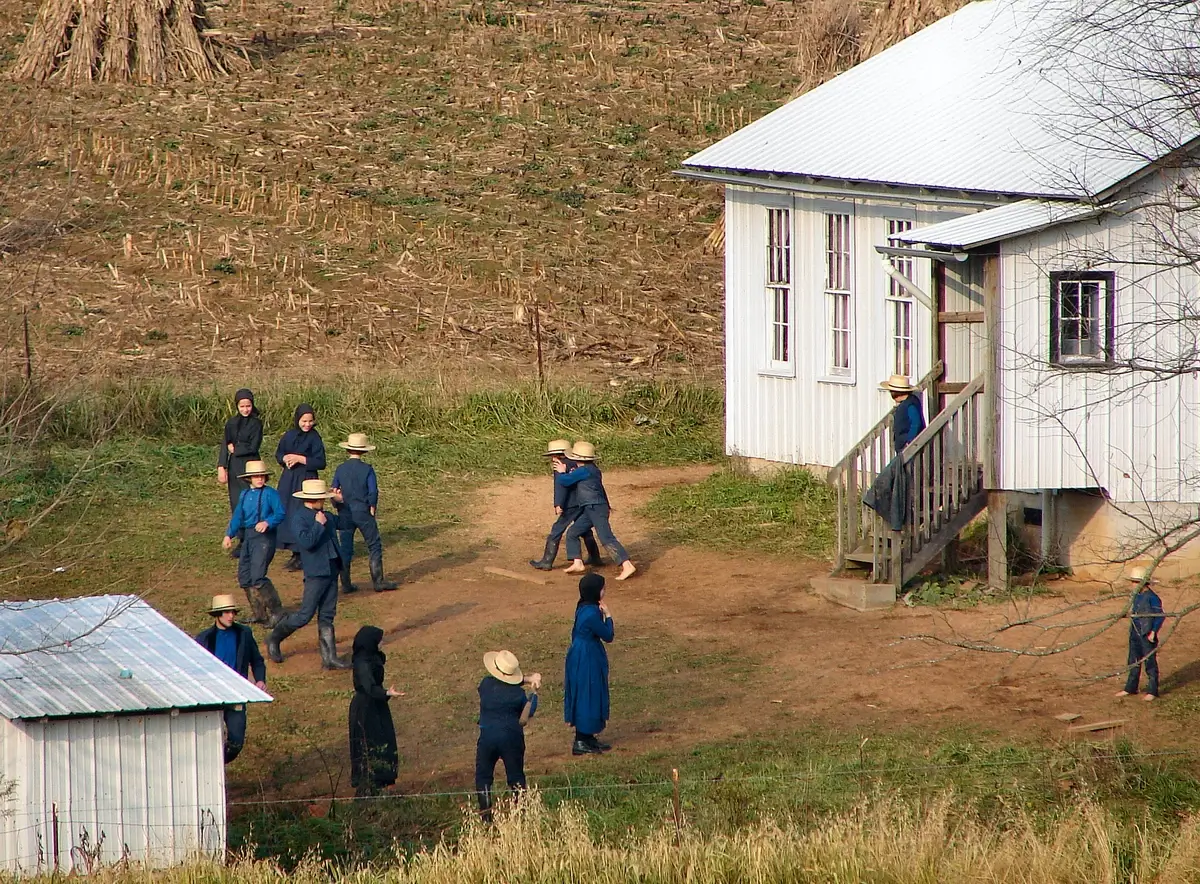
Amish children during recess in the school yard. Image: Cindy Cornett Seigle / Flickr
The Amish education system is distinctively tailored to their way of life, emphasizing practical skills over academic credentials. Formal schooling for Amish children concludes at the eighth grade, a practice rooted in their desire to focus on agricultural labor, craftsmanship, and instilling religious values. This educational framework is designed to prepare students for life within the Amish community, emphasizing hands-on learning and apprenticeships in lieu of extended classroom education.
The curriculum in Amish schools covers basic subjects including reading, writing, and math, alongside Amish history and values, while also teaching Pennsylvania Dutch, High German, and English to ensure students can navigate both their community and interactions with the non-Amish world. Despite the early end to formal education, Amish communities maintain a high success rate in their ventures, with over 95% of Amish businesses reported to be successful, highlighting the effectiveness of their vocational and on-the-job training models.
Amish schools, usually one-room schoolhouses, are community-funded and placed on land donated by a community member. The school board, often comprising three male parents, oversees the school’s operation, including hiring teachers, who are typically young, unmarried Amish women. Despite the simplicity of their education system, Amish students often outperform their non-Amish rural counterparts in basic educational achievements.
The Supreme Court case of Wisconsin v. Yoder in 1972 legally recognized the Amish right to withdraw their children from public schools after the eighth grade, citing religious freedom. This landmark decision allows the Amish to educate their children in a manner consistent with their beliefs and cultural practices.
The Amish education system is a reflection of their broader societal values, which prioritize community welfare, humility, and a life of simplicity, distinct from mainstream societal norms.
5. Using Modern Transportation Services: The Amish Approach

Image: heraldtribune.com
Despite their traditional lifestyle, the Amish community makes practical use of modern transportation services. While Amish individuals do not own or drive cars, adhering to their commitment to simpler ways of life, they utilize cars, vans, and public transportation for essential travel, business purposes, or when traveling long distances. This pragmatic use of transportation is vital for connecting with the wider world, facilitating their business operations, and attending to personal and communal needs.
In rural areas, the Amish often hire drivers, sometimes referred to as “Amish taxis,” for trips that are impractical by horse and buggy. These services are prearranged through shared landline phones placed in “phone shanties” throughout their communities. This system, akin to a rural Uber, supports various needs from grocery shopping to medical appointments. These drivers, sometimes becoming an integral part of the Amish community, offer a crucial link to the external world without compromising the Amish’s principles.
For longer travels, the Amish also rely on mass transit options like Amtrak, Greyhound, and local bus services. This use of public transportation supports work commutes to places like Pennsylvania Dutch markets and enables travel to other communities or states for personal and business reasons.
In some instances, Amish businesses employ non-Amish workers who can drive, providing a practical solution for transporting Amish workers, especially in industries like construction where work sites are often distant.
6. Shopping in Modern Stores
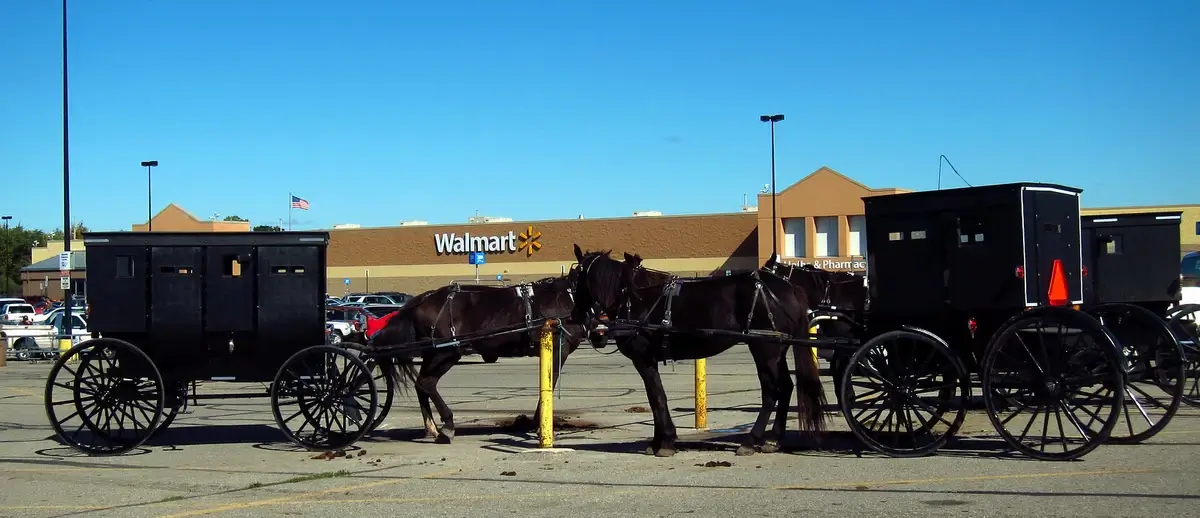
Amish parking at Walmart. Image: Marks Photography / Flickr
Despite their traditional lifestyle, Amish communities are not entirely disconnected from the modern economy. In fact, Amish people shop at community stores as well as modern commercial stores like Walmart but avoid technology stores.
Walmart, known for its low prices and bulk purchasing options, is particularly appealing to the Amish, who often have large families and value frugality. The stores’ widespread availability means that many Amish communities, which are predominantly based in rural areas, are within reachable distance to a Walmart. This convenience is further complemented by Walmart’s accommodation of Amish buggies in some locations, showcasing a bridge between two vastly different cultures.
The Amish also frequent salvage stores, dry goods stores, and large supermarkets for their varied needs. Salvage stores, for instance, cater to the Amish preference for economical shopping, offering goods that are near their sell-by date or have damaged packaging at reduced prices. Dry goods stores are crucial for acquiring textiles and other essentials for their handmade clothing, a staple of Amish identity.
Apart from traditional store visits, the Amish employ alternative methods like auctions, door-to-door sales, and catalogs to procure items ranging from farm equipment to household goods. These methods not only fulfill their shopping needs but also adhere to their community values and lifestyle.
7. Controversial Puppy Mills and the Amish Community
The Amish community, known for their simple living and eschewal of modern technology, has been controversially linked to puppy mills. These establishments, criticized for prioritizing profit over animal welfare, breed dogs in conditions that often lead to health and behavioral issues. Despite the community’s reputation for hard work and self-sufficiency, the involvement of some in dog breeding practices that treat dogs more as livestock than pets has sparked significant backlash.
Critics argue this contrasts sharply with the Amish’s professed values of compassion and stewardship, citing instances of inadequate care, socialization, and medical attention. The controversy sheds light on the complexities of Amish interaction with modern economies and raises questions about animal rights and ethical breeding practices.
8. Rumspringa: A Rite of Passage for Amish Youth
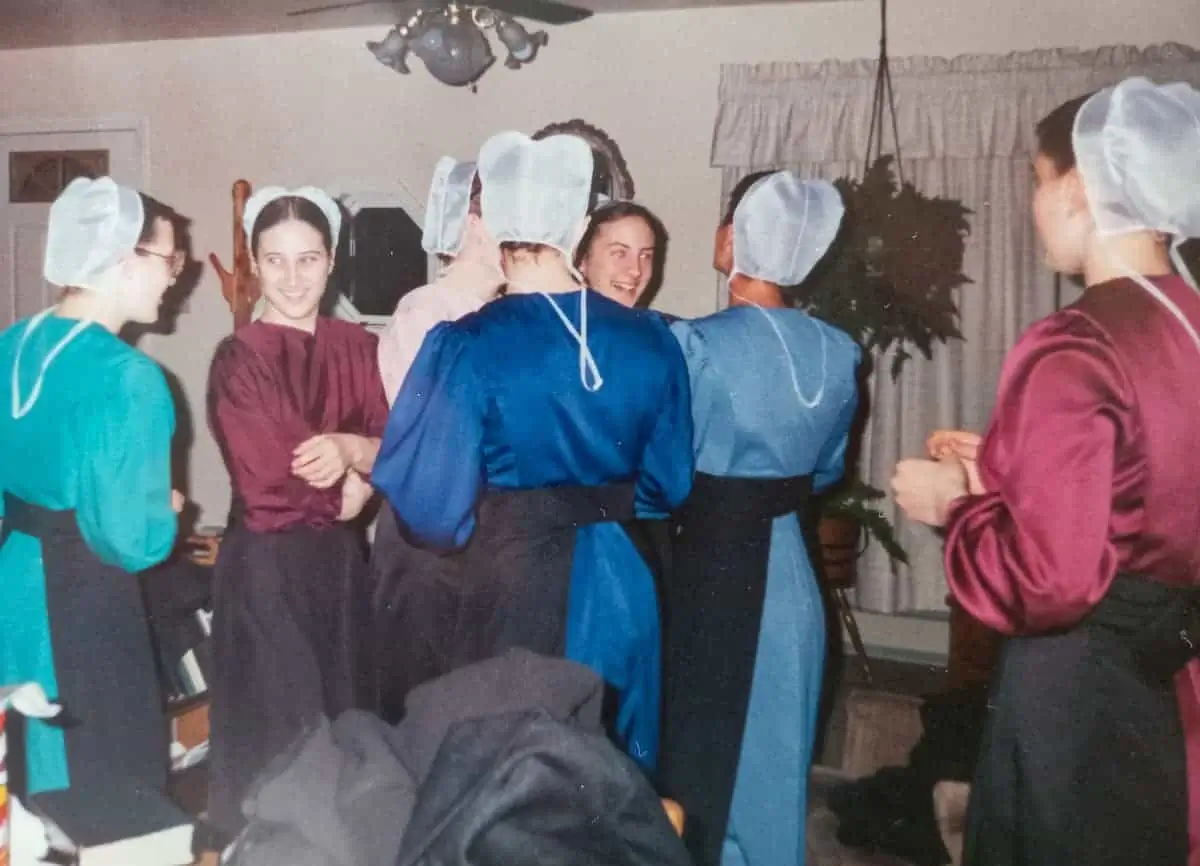
Amish Rumspringa. Image: amish-heritage.org
Rumspringa, translating to “running around” in Pennsylvania Dutch, is an Amish adolescent’s rite of passage, typically commencing at age 16. This period offers Amish youth a chance to experience life with fewer restrictions, not yet being subject to the Amish community’s unwritten norms, known as the Ordnung. The experiences during Rumspringa vary widely among individuals and communities, reflecting the diversity within the Amish population.
Key aspects of Rumspringa:
- Socialization and Marriage: The primary aim is socializing with peers and finding a marriage partner, not necessarily engaging in “wild” behaviors.
- Activities and Behaviors: Youth may explore wearing non-Amish clothes, using technology, and attending parties. However, participation in such activities varies, with many adhering to traditional Amish behavior.
- Decision Making: Post-Rumspringa, individuals decide whether to be baptized into the Amish church, a decision usually made before age 23.
- Parental Guidance: Despite newfound freedoms, most youth continue living at home, with their actions influenced by parental and community expectations.
Rumspringa’s nature and the degree of exploration allowed differ greatly between larger communities, where youth may find an Amish subculture, and smaller ones, where behaviors are more restrained due to a lack of anonymity.
During this period, Amish youth participate in various recreational activities like volleyball, softball, and picnics. Singings, or gatherings for hymnal and gospel song singing, are typical, fostering community bonds and potential courtship opportunities.
9. Prohibition Against Law Enforcement Careers
The Amish community, with its foundation in non-resistance and a life led by the principles of peace, holds a distinct stance on careers that contradict their core beliefs, particularly in law enforcement. This position is deeply rooted in their religious doctrine, emphasizing non-resistance as a fundamental aspect of their faith, which extends beyond mere pacifism to encompass all facets of violence, including those potentially encountered in law enforcement, military service, and legal actions. The Amish interpret non-resistance as a direct adherence to Christ’s teachings, advocating for a life of peace and the avoidance of any form of violence or coercion that law enforcement roles might entail.
The Amish’s prohibition against careers in law enforcement is intrinsically linked to their broader philosophy of separating from and living simply within the world but not being of it. This philosophy underpins their reluctance to engage in activities that could compromise their values of humility, community, and separation from societal norms that conflict with their beliefs. The exemption of the Amish from military service, stemming from the same principle of non-resistance, parallels their stance on law enforcement careers. Such positions are seen as incompatible with the Amish way of life, which prioritizes peace, mutual aid within the community, and a clear distance from the societal systems that uphold violence and coercion.
10. No Private Access to Electricity or Technology
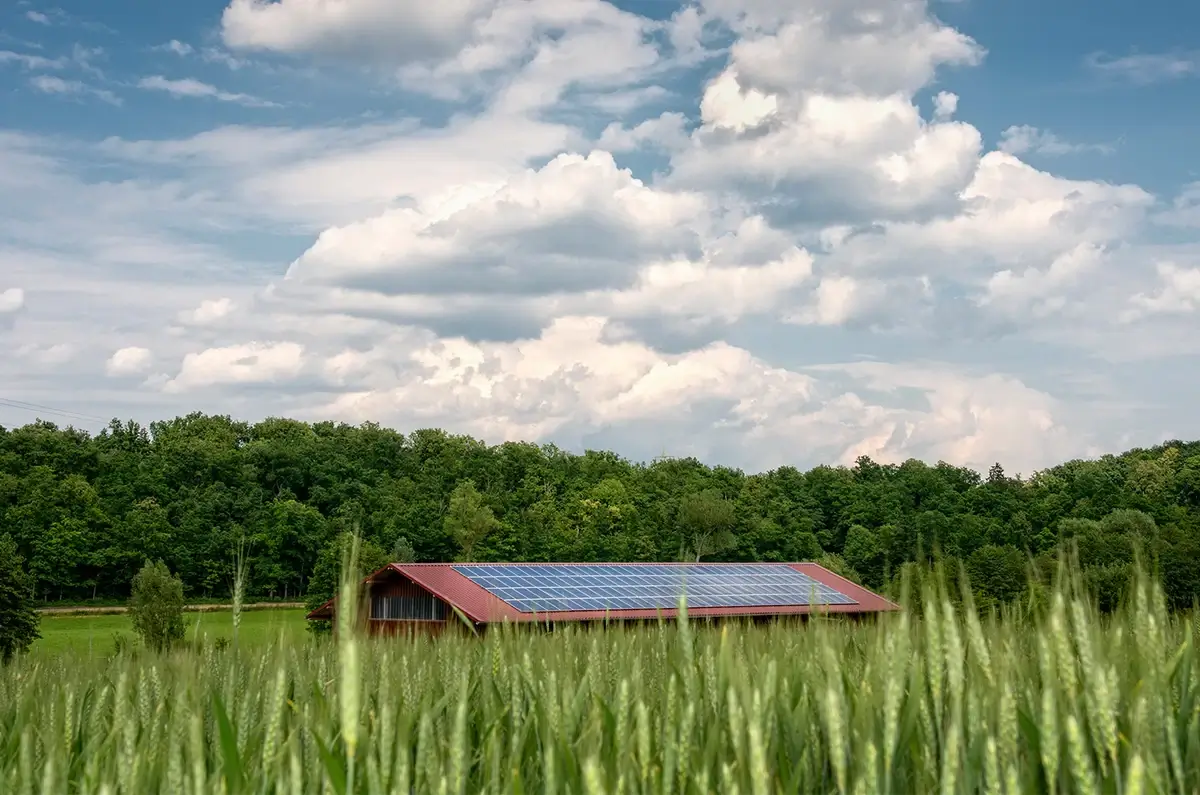
An Amish farm with solar panels. Image: farmprogress.com
The Amish maintain a distinctive lifestyle centered on community cohesion, significantly marked by their selective approach to technology and electricity. Unlike the broader society, Amish homes generally eschew public electricity grids and high-tech gadgets to reinforce community bonds and a simpler way of living focused on spiritual values.
However, this stance does not wholly exclude technology; Amish communities pragmatically incorporate technology for business transactions and certain utilities, ensuring these tools do not disrupt their way of life. For instance, diesel generators, pneumatic tools, and solar panels are utilized within specific guidelines, allowing Amish businesses to operate efficiently while still adhering to their core principles of simplicity and self-reliance.
11. Amish Beliefs: An Anabaptist Christianity Overview

Amish people attend a church service at a church member’s home in Indiana. Image: amishamerica.com
The Amish faith, rooted in Anabaptist Christianity, emphasizes a literal interpretation of Jesus’s teachings, particularly the Sermon on the Mount. Originating from the 16th-century Radical Reformation in Europe, Anabaptists advocated for adult baptism over infant baptism, signifying a personal commitment to faith. This principle of believer’s baptism is central to Amish beliefs, highlighting a conscious decision to follow Jesus and a voluntary church membership separate from state influence.
Amish spirituality is deeply influenced by their reading of the Bible and several key texts, including Luther’s German Bible, the Martyrs Mirror, the Ausbund, and the Dordrecht Confession of Faith. Their faith is more about living in accordance with Jesus’s teachings than adhering to formal theological doctrines. This includes practices like loving enemies, forgiving insults, and emphasizing mutual aid within the community. Such beliefs underscore their commitment to a life of nonviolence, separation from societal norms, and self-sufficiency, rejecting Social Security and commercial insurance in favor of community support.
The Amish community’s adherence to the Dordrecht Confession of Faith, formulated in 1632, includes eighteen articles that cover core Christian doctrines and distinctive Anabaptist beliefs such as nonviolence and shunning. Hymns from the Ausbund, many written by 16th-century imprisoned Anabaptists, also play a significant role in shaping Amish worship and beliefs.
12. Women’s Roles and Restrictions in Amish Society
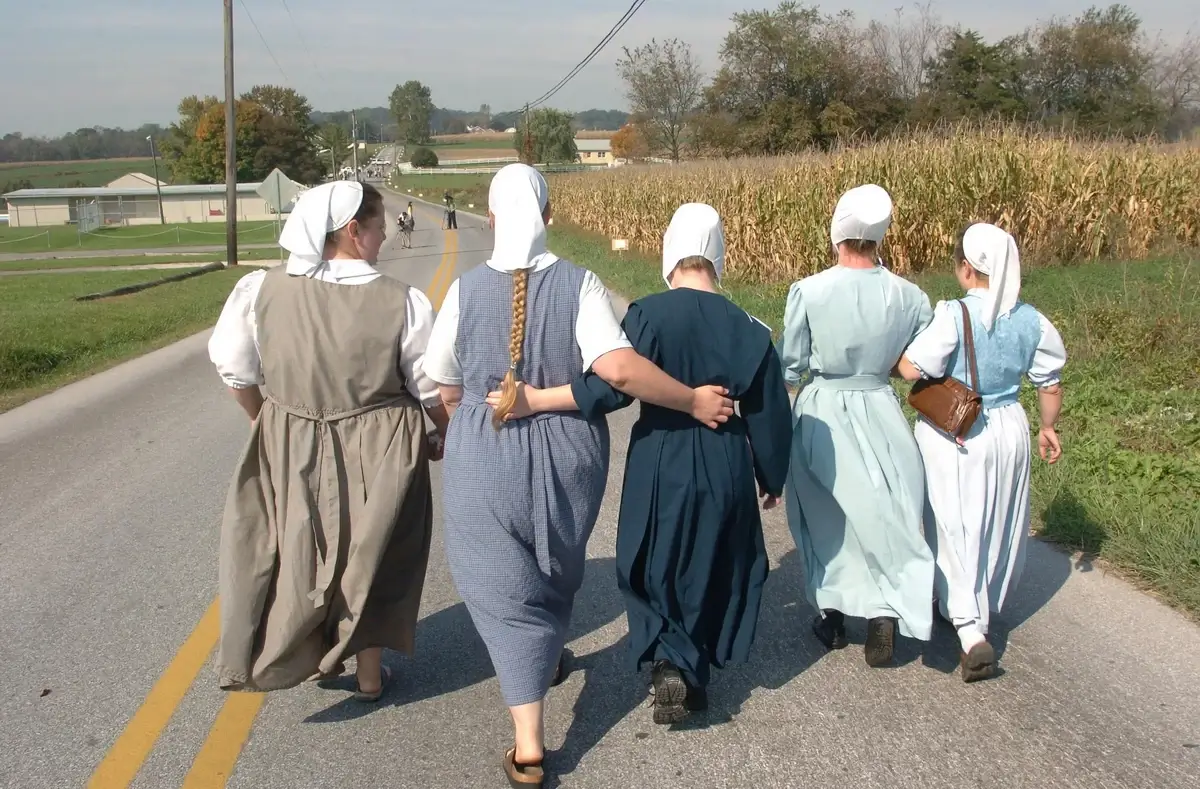
Image: thesun.co.uk
In the Amish community, women’s roles are deeply intertwined with traditional values, focusing on homemaking, child-rearing, and contributing to community life. While maintaining a strong commitment to their roles as caregivers and supporters within the household, modern Amish women may also engage in business endeavors, illustrating an adaptive approach to traditional practices. Their attire, characterized by simplicity and modesty, mirrors the community’s emphasis on humility and piety.
Amish women’s submission to their husbands, as dictated by their interpretation of biblical texts, coexists with a dynamic of mutual respect and partnership. Decision-making within the home often involves a collaborative dialogue, with women wielding significant influence in matters related to the household and family. This balance reflects a nuanced understanding of gender roles within the Amish community, where the value of women’s contributions is acknowledged within the framework of their cultural and religious beliefs.
Despite external perceptions, many Amish women express contentment with their roles, finding fulfillment in their faith, families, and communities. However, challenges such as marital discord or domestic abuse are not absent from Amish society, though divorce remains rare. The community’s support system and shared values often provide a strong foundation for individual and collective well-being.
13. Controversial Issues in Amish Communities
Despite their peaceful reputation, Amish communities are not exempt from challenges such as mental health issues and crime. Research indicates that genetic predispositions to certain mental health conditions exist among the Amish, similar to the general population. However, their strong community bonds and faith seem to mitigate the prevalence of depressive episodes and suicides.
Mental health treatment within Amish communities has adapted over time, with facilities like Rest Haven in Indiana providing care in settings that respect Amish culture. These facilities offer a blend of traditional Amish living environments and access to modern psychiatric treatments.
Challenges also extend to individuals leaving the Amish community, particularly women, who seek assistance in transitioning to mainstream society. Organizations like Mission to Amish People provide support in terms of housing, education, and employment, catering to the specific needs of those making this significant life change.
14. Voting in Elections: The Amish Perspective
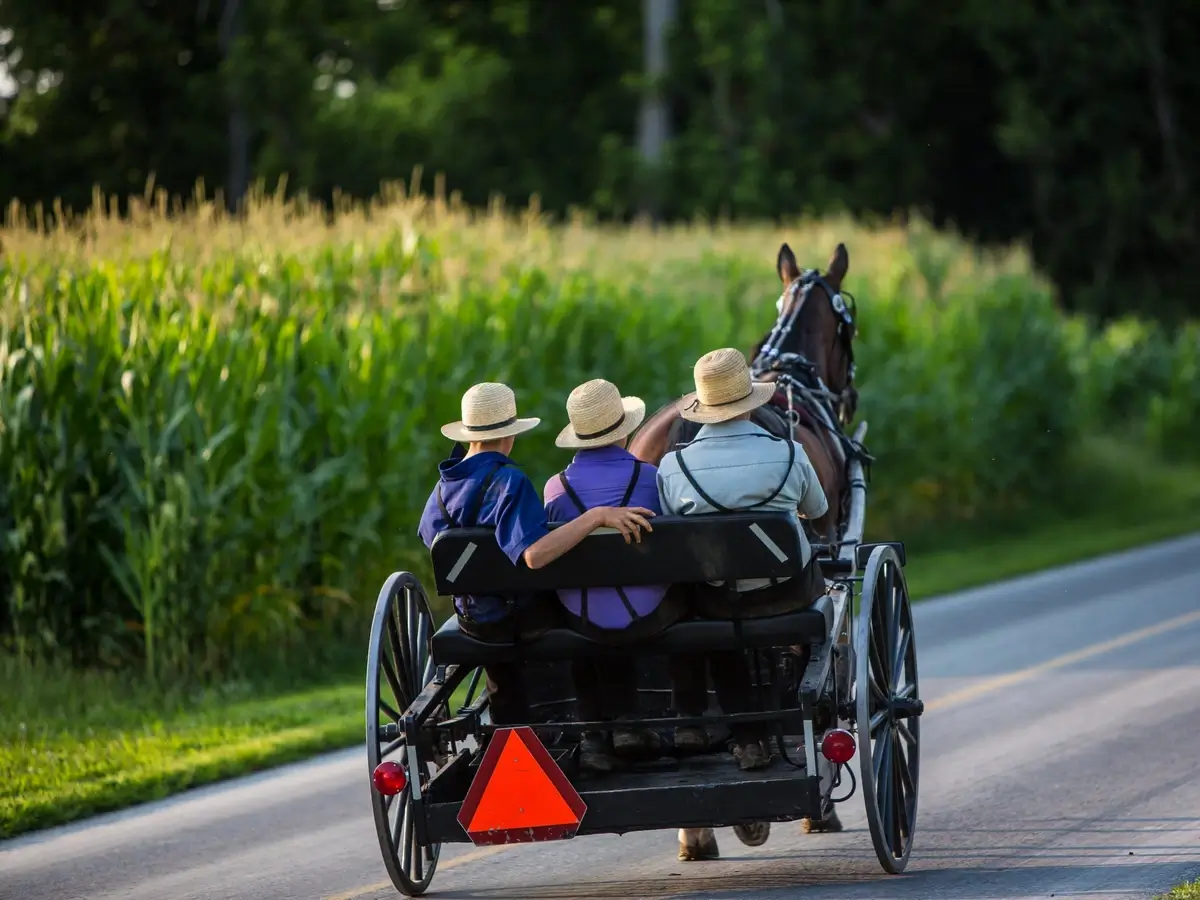
Image: pinimg.com
The Amish’s approach to voting is characterized by a general disinterest stemming from their prioritization of community values over political engagement. Their cultural and religious principles, which emphasize detachment from secular society, naturally extend to a cautious stance on political participation. Nonetheless, instances of voting occur, particularly among younger, business-oriented Amish individuals in more progressive communities, where direct community impact issues such as zoning might motivate electoral involvement.
Efforts like the Amish PAC, which aimed to increase Amish voter turnout in recent elections by aligning with values pertinent to the Amish, have seen limited success. This minimal impact reflects the deeply ingrained cultural reluctance towards political involvement. Voting logistics, like the need for photo ID, present additional barriers due to religious prohibitions against photography, though some states offer alternatives for those with religious objections.
15. Amish Dolls Lack Facial Features to Prevent Vanity and Promote Uniformity

Image: Wikimedia Commons
Amish dolls, distinctly known for their lack of facial features, symbolize the community’s values of humility, simplicity, and equality before God. This tradition roots in the Amish belief system that emphasizes modesty and the avoidance of pride and vanity, which can be fostered through physical representations of the human form. The absence of faces on these dolls reflects a broader interpretation of the Biblical prohibition against creating graven images, aligning with the notion that only God has the authority to create life. Furthermore, it’s suggested that faceless dolls prevent the attribution of individuality or soul, thus promoting uniformity and the collective identity over personal vanity.
Another layer to the tradition may stem from a desire to avoid any form of idolatry or the creation of objects that could be perceived as having life or spirit, which aligns with certain interpretations of Christian doctrine regarding the creation of images. Additionally, the simplicity of these dolls, crafted from materials like cotton, muslin, and sometimes stuffed with straw, reflects the Amish community’s lifestyle that prioritizes simplicity and eschews the superfluousness often found in modern toys and entertainment.
16. Sports and Recreation in the Amish Community

At the Heritage Day celebration in Lancaster County, Pennsylvania, young people from both Amish and non-Amish communities come together to play volleyball. Image: georgesheldon.com
Volleyball and horseshoes are central to Amish recreational life, reflecting their values of community and physical activity. Volleyball, in particular, is integral to Amish social gatherings, often played by mixed-sex teams, underscoring the community’s commitment to inclusivity. These games are typically followed by friendly gestures, such as high-fives, emphasizing sportsmanship over competition. The participation of both youth and adults in these activities highlights their role in fostering community bonds across generations.
Horseshoes, alongside volleyball, features prominently at Amish gatherings, embodying the community’s preference for simple, engaging outdoor games. These activities not only serve as a means of leisure but also reinforce the Amish values of modesty, simplicity, and communal harmony. They illustrate how the community balances a physically active lifestyle with their cultural and religious principles.
17. Marriage and Family Size
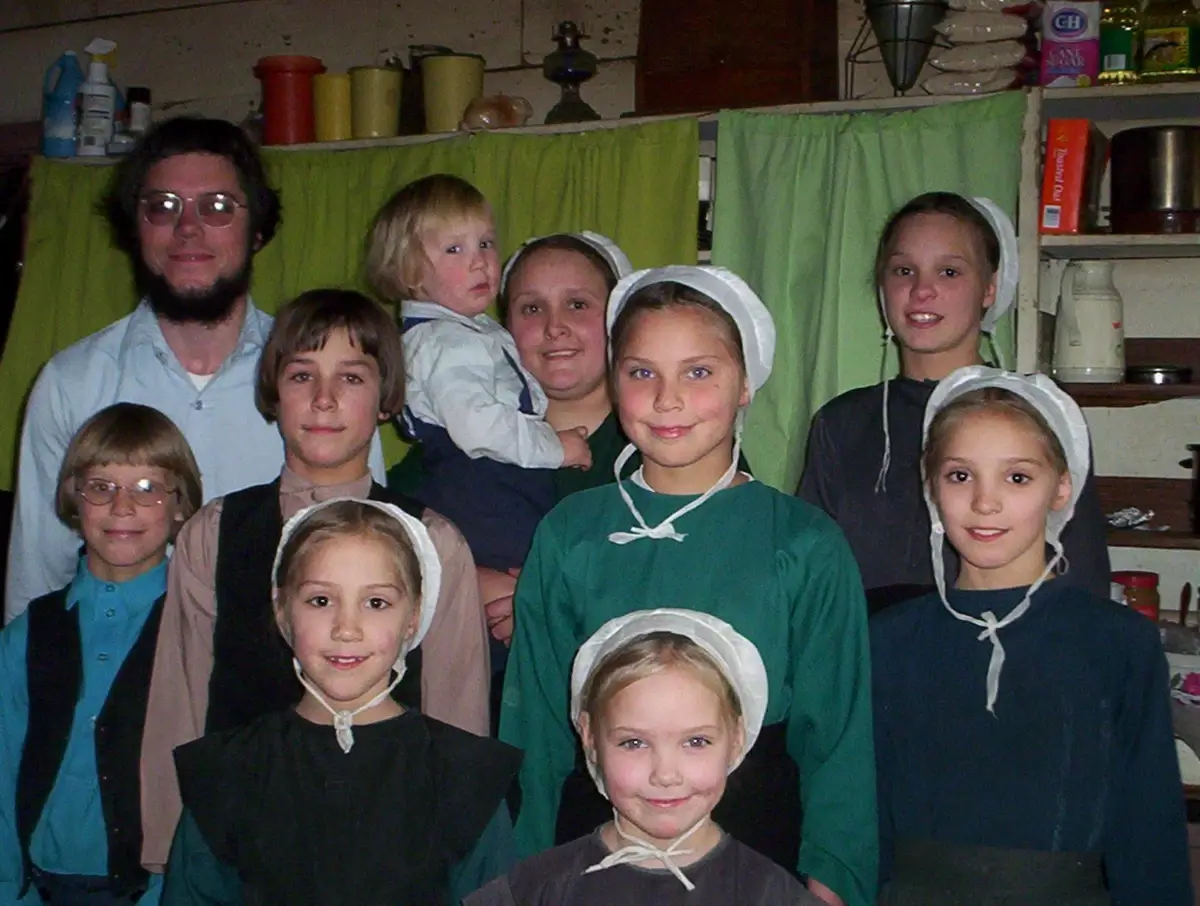
A typical Amish family size. Image: mavink.com
The Amish community is renowned for its strong emphasis on family values, which is reflected in their practices surrounding marriage and family size. Typically marrying within their community, Amish families are known for being large, with an average of seven to eight children. This large family size can be attributed to a combination of religious beliefs, cultural practices, and the agrarian lifestyle that many Amish people adhere to.
Amish couples may have up to 10 or more children, with fifteen not being unheard of, especially in more conservative affiliations. However, the average number of children per Amish family is generally between six to eight. This variance in family size is influenced by the community’s specific beliefs and practices, as well as individual family decisions. While the use of contraception is frowned upon within the Amish community, it is practiced by some, especially in more progressive communities. Nonetheless, the prevailing view among the Amish is that children are gifts from God, and thus, they welcome large families.
The significance of large families in the Amish community can be partly explained by their agrarian traditions and the need for manual labor. Amish children are raised in a close-knit community environment, surrounded by siblings, cousins, and extended family members, fostering a strong sense of belonging and community responsibility. They are taught from a young age to contribute to household and farm work, instilling a strong work ethic. Moreover, the extended family structure, including numerous aunts, uncles, and grandparents, often living nearby, ensures that Amish children rarely lack for companionship and playmates.
18. Unique Stance on Evangelism
The Amish, known for their simple, devout lifestyle, prioritize living their faith over vocal proselytizing. They embody the principle that actions speak louder than words, emphasizing the power of demonstrating one’s faith through daily life rather than engaging in active evangelism. This approach stems from their interpretation of Christian teachings, focusing on personal piety and communal living rather than seeking to convert others to their way of life. Unlike more evangelistic Christian denominations, the Amish and some groups of Mennonites shy away from outreach programs that target conversion, preferring instead to let their life be a testament to their beliefs.
The Amish’s reticence to evangelize aligns with their broader theological stance of separation from the world, valuing a community-oriented life that upholds their strict interpretation of Christian doctrine. While the early Anabaptists, from whom the Amish descend, were more evangelistic, facing persecution for their zeal, over time, this missionary spirit has waned. Today, the Amish are more recognized for their traditions and the peaceable way they navigate life than for active evangelism. They adhere to the concept of being “the quiet in the land,” a reflection of their desire to live out their faith without the aim of converting others.
FAQ
Do Amish drink alcohol?
Yes, Amish people do drink alcohol, but the frequency and context vary significantly across different communities. Alcohol consumption is generally moderated and may be more common in social and family gatherings.
What are some Amish rules?
Amish communities follow a set of guidelines known as the Ordnung, which dictates many aspects of their life, including dress code, technology use, and social behaviors. Key rules include prohibition of electricity from public power grids, owning or driving cars, and using modern technology like smartphones and the internet. The rules vary by community.
What do Amish do for fun?
Amish people engage in various activities for fun, including social gatherings, barn raisings, quilting bees, playing traditional games, and spending time outdoors. Activities are generally family-oriented and community-based, focusing on simplicity and fellowship.
Do Amish eat pork?
Yes, the Amish do eat pork. Their diet includes a variety of meats, with pork being a common component due to the tradition of hog butchering and sausage making in Amish communities.
Can Amish listen to music?
The Amish can listen to music, but the type and method of consumption are restricted. Instrumental music and singing are part of their religious and social gatherings. However, electronic music and radios are generally prohibited, as they are seen as a connection to the outside world and a potential distraction from community and family life.
Are there black Amish?
Yes, there are black Amish individuals, although they are rare. The Amish community is primarily of Swiss and German descent, and its members are predominantly white. However, there have been instances of African Americans joining Amish communities through conversion or adoption.
What do Amish do on Sundays?
Sundays for the Amish are dedicated to worship and family. The day begins with a church service that lasts several hours, followed by a communal meal. The rest of the day is spent visiting with family and friends, resting, and reflecting, with all work and commercial activities ceasing in observance of the Sabbath.


